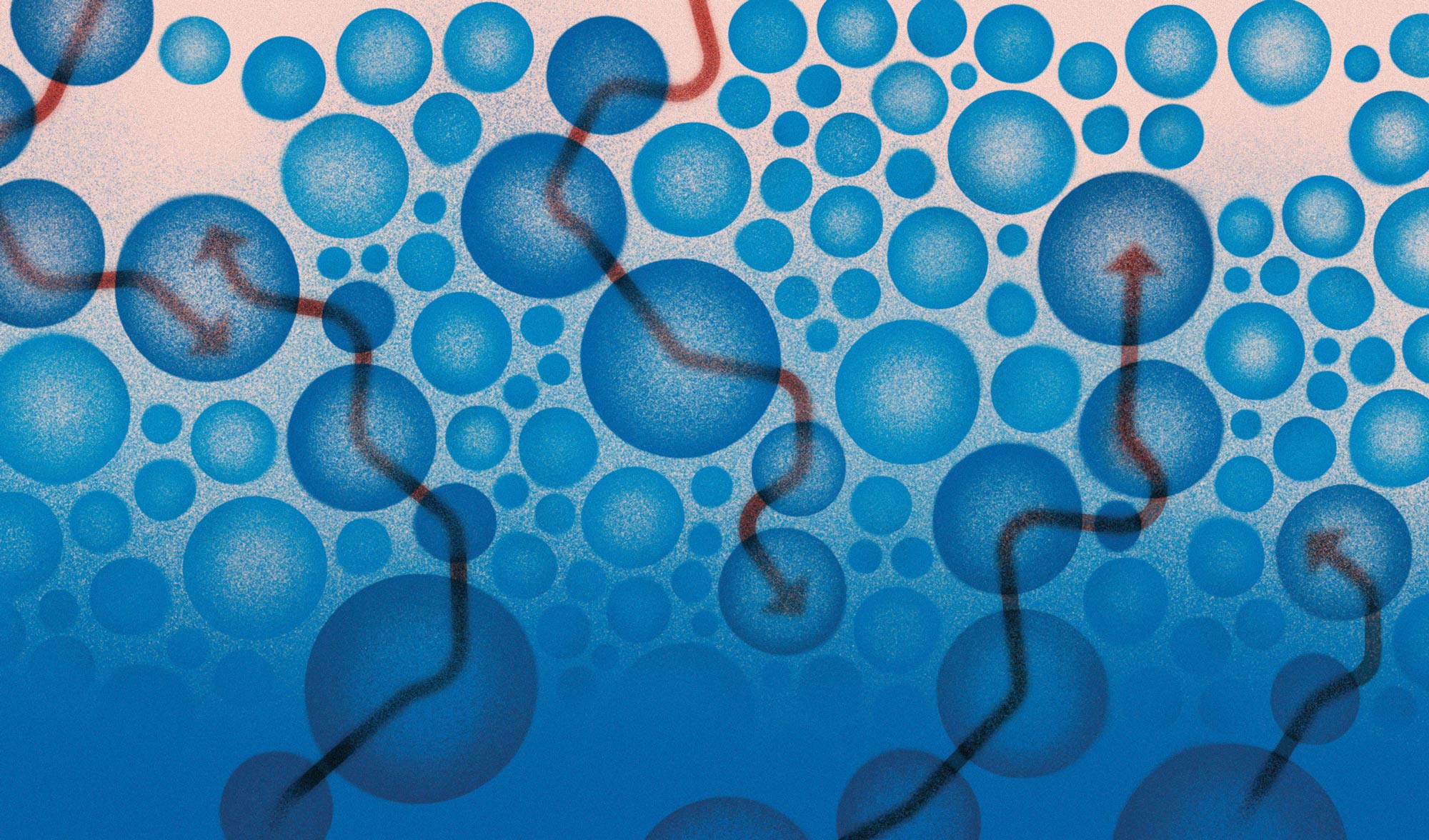New research published in Nature Physics details the relationship between a disordered material’s individual particle arrangement and how it reacts to external stressors. The study also found that these materials have “memory” that can be used to predict how and when they will flow.
The study was co-led by Xiaoguang Ma, a former postdoc in the lab of Arjun Yodh, James M. Skinner Professor of Science, in collaboration with researchers in the lab of Douglas Jerolmack, Professor of Earth and Environmental Science. Other co-leads in the study included researchers in the lab of Celia Reina, William K. Gemmill Term Assistant Professor in the Department of Mechanical Engineering and Applied Mechanics; and Larry Galloway, a Ph.D. student in the lab of Paulo Arratia, professor in the departments of Mechanical Engineering and Applied Mechanics and Chemical and Biomolecular Engineering in the School of Engineering and Applied Science.
A disordered material is randomly arranged at the particle-scale, instead of being systematically distributed—for example, a pile of sand, not a neatly stacked brick wall. The key question was whether one can observe the structure of a disordered material and have some indication as to how stable it is or when it might begin to break apart. This is known as the yield point, or when the material “flows” and begins to move in response to external forces.
While it has been known that individual particle distribution influences yield point, or flow, in disordered materials, it has been challenging to study this phenomenon since the field lacks ways to “quantify” disorder in such materials. To address this challenge, the researchers collaborated with colleagues from across campus to combine expertise across the fields of experimentation, theory, and simulations.
For the experiments, the researchers track individual particles on top of a liquid-air interface akin to what coffee grounds floating on top of water look like, the researchers say. Then, they use a magnetic needle that moves back and forth to apply a shearing force. With this system, the researchers are able to systematically apply forces to 50,000 particles, track their detailed movement, and use complex image analysis to see if, for example, two neighboring particles remain next to one another after a shearing force is applied.
To help connect their experimental results to theories of excess entropy, the Arratia lab worked with colleagues from the Reina group, who have theoretical expertise in non-equilibrium thermodynamics, as well as colleagues from the Yodh lab, who have experimented with excess entropy concepts to elucidate equilibrium and non-equilibrium systems. In addition, Jerolmack’s group shared their expertise in studying particle flow to help connect the complex experimental results with simulations.
One of the most significant findings from this study is that disordered materials can “remember” the forces that were applied to them and that this memory can be measured by looking at individual particle distributions.
The researchers also found that disordered materials lose this memory when a threshold of stress is surpassed, which occurs at the same time the material reaches its yield point and starts to flow.
While the concept of memory in disordered materials had been known for some time, the strong correlation seen in their results between particle distribution, flow, and memory surprised the researchers. Moving forward, they are planning to build on this work by studying other particle sizes and types, research that could help address how universal this concept is and how their results relate to thermodynamics and excess entropy more broadly.



